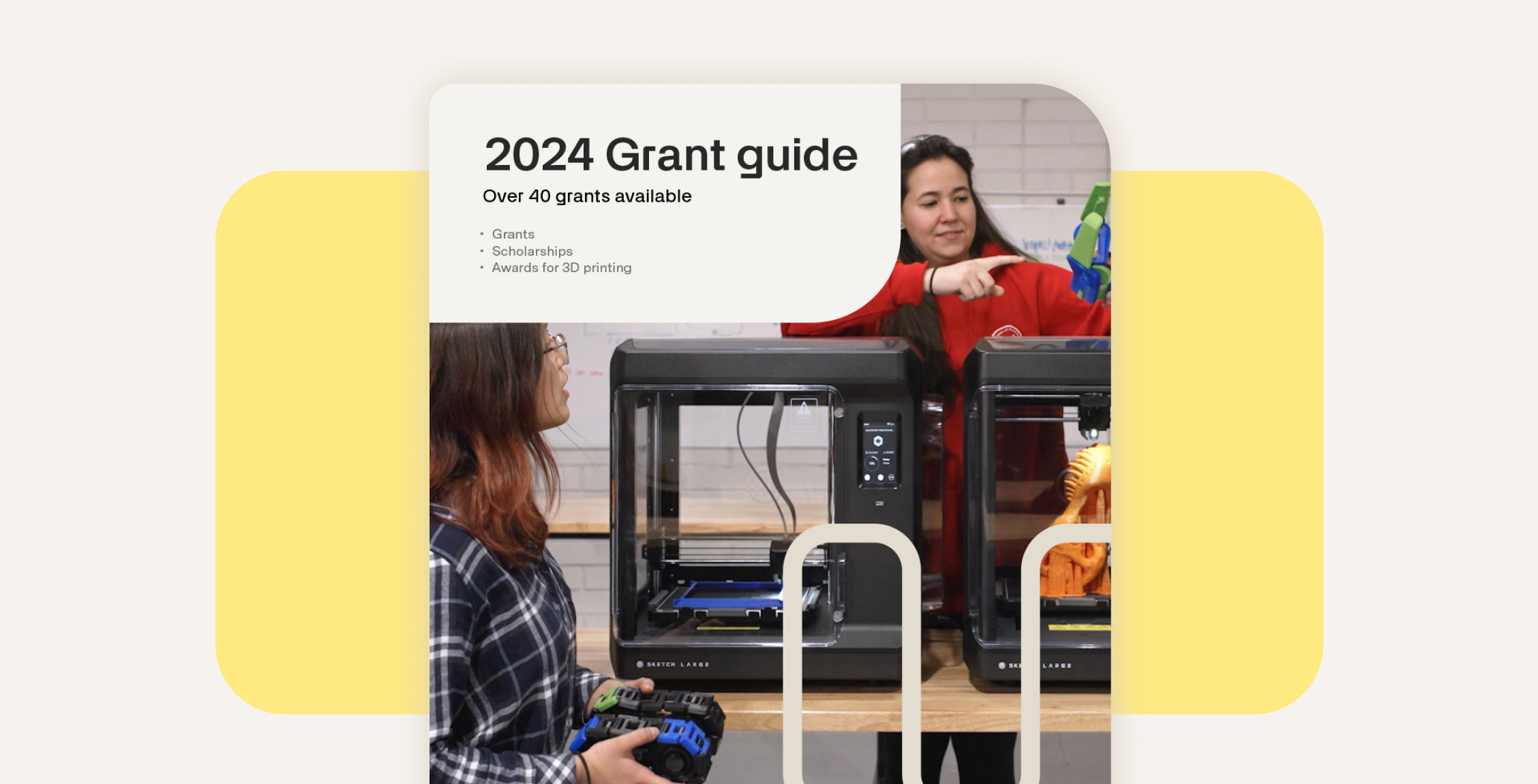Welcome to the 2024 MakerBot Grant Guide
Please find our 2025 grant guide here
The MakerBot Grant Guide is your essential resource for securing funding to introduce 3D printing technology into your classroom. Explore our curated list of over 40 grants, awards, and scholarships and find funding opportunities that support enhancements to classroom learning and professional development.
Key Features:
Comprehensive Grant Listings: Explore a selection of over 40 grants, awards, and scholarships tailored for educators looking to integrate 3D printing solutions into their classrooms.
Find the Funding You’re Looking For: Find the kind of funding you’re looking for–whether that’s funding for the classroom or funding for your professional development.
Strategic Insights: Benefit from practical tips in our "10 Tips to Secure a Grant" section, offering valuable insights to enhance your application.
Implementation Roadmap: Utilize the "10-Step Classroom 3D Printing Action Checklist" for a systematic approach to seamless classroom integration.
This guide is equipped with over 40 grants, awards, and scholarships that can be used to apply for funding for 3D printers, consumables, classroom enrichment programs & equipment, as well as professional development for educators.
- Each funding opportunity specifies the applicable grade levels on the right side for easy reference.
- As well as the application deadline and/or submission window
10 Tips to secure a grant for your classroom or school
Winning a grant can be the difference between better resources for the classroom or funding an entire program. To help you secure a grant, we put together ten key tips:
1. Start by Planning and Preparing for Your Grant Application
To submit a strong application on time, you will need to stay organized, build a list of all the documents or information you need, and assess how long it will take you to actually complete the application.
2. Follow Proper Protocols Even Before You Apply
In some states and school districts, you are required to obtain approval from a school board before requesting grants over a certain dollar amount. Don’t put yourself through the work of a grant application only to later learn it’s disqualified because of this protocol or others like it
3. Plan out Implementation of the Grant
The person who applies for the grant isn’t necessarily the one who implements it. Before you apply, you should have a very clear idea and plan of how it will be implemented, who will do so, and how success will be evaluated afterward.
4. Find Sources and Build a Strategic List — Starting with the 2024 MakerBot Grant Guide
To keep your research efficient, start by scouring the internet for the best places that list grants and then build a strategic list to work through. Both Grants 4 Teachers and Grants.gov are sites to bookmark and use along with the 2024 MakerBot Grant Guide. You will want to start small and apply for grants that seem like the easiest to secure. Since you might need to apply for a variety, it’s helpful to prioritize that list for your goals — whether it’s by dollar amount or easiest-to-win.
5. Carefully Study an Example of a Successful Grant Application
Many foundations and other grant sources provide an example of a successful application. Even if you have plenty of experience, you will want to
study an example in case there are any unusual requirements. In the event when you cannot find the right sample, you can also try to contact a grant winner for a copy of their application.
6. Develop a Template for the Key Elements of an Application
Most grant proposals require the following at the very least; however, be prepared to include more.
7. Source Compelling Statistics and Facts
Since you aren’t the only school applying for a grant, you need to separate your application from the rest. Citing compelling statistics can add objective power to your case. Reference MakerBot’s Trend Report in EDU & 3D Printing for helpful facts and statistics.
8. Request a Precise, Accurate Funding Amount
Be exacting when you request grant funding. If you ask for more than the grant offers, then your application will likely be disqualified. If you underestimate, then you will have to make up for the rest of the money. Also, always remember to account for small grant fees, like shipping and sales tax. To get a free custom quote for the 3D printer solution you are looking for, contact [email protected].
9. Workshop Your Grant Writing
To step up your grant applications, you might consider attending a workshop or listening to webinars. Leveraging the experience, intelligence, and feedback of others can only sharpen your skills.
10. Proof Your Application Relentlessly
Your grant application should be as inscrutable as possible. Even small errors, like typos, can lead to doubts about the seriousness of your application. Once you are done, step back, take a big-picture look at your application, and then send it off!
Ready to take the next step toward hands-on learning and innovation? Download the MakerBot Grant Guide!
Unlock opportunities for innovation and bring the transformative power of 3D printing to your classroom.
















